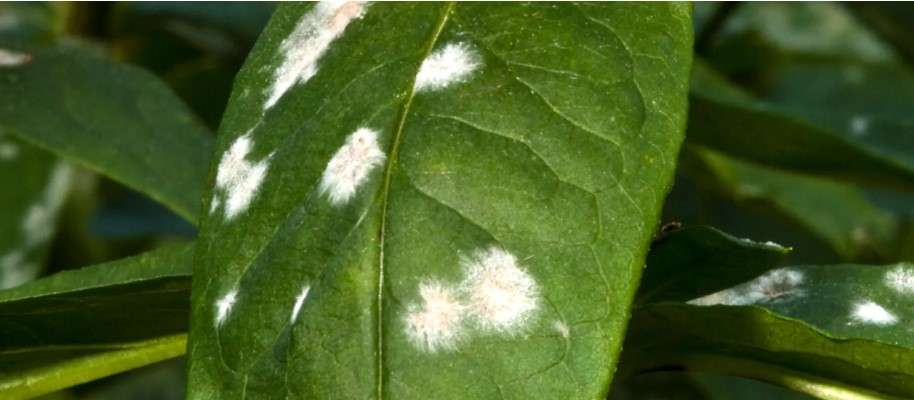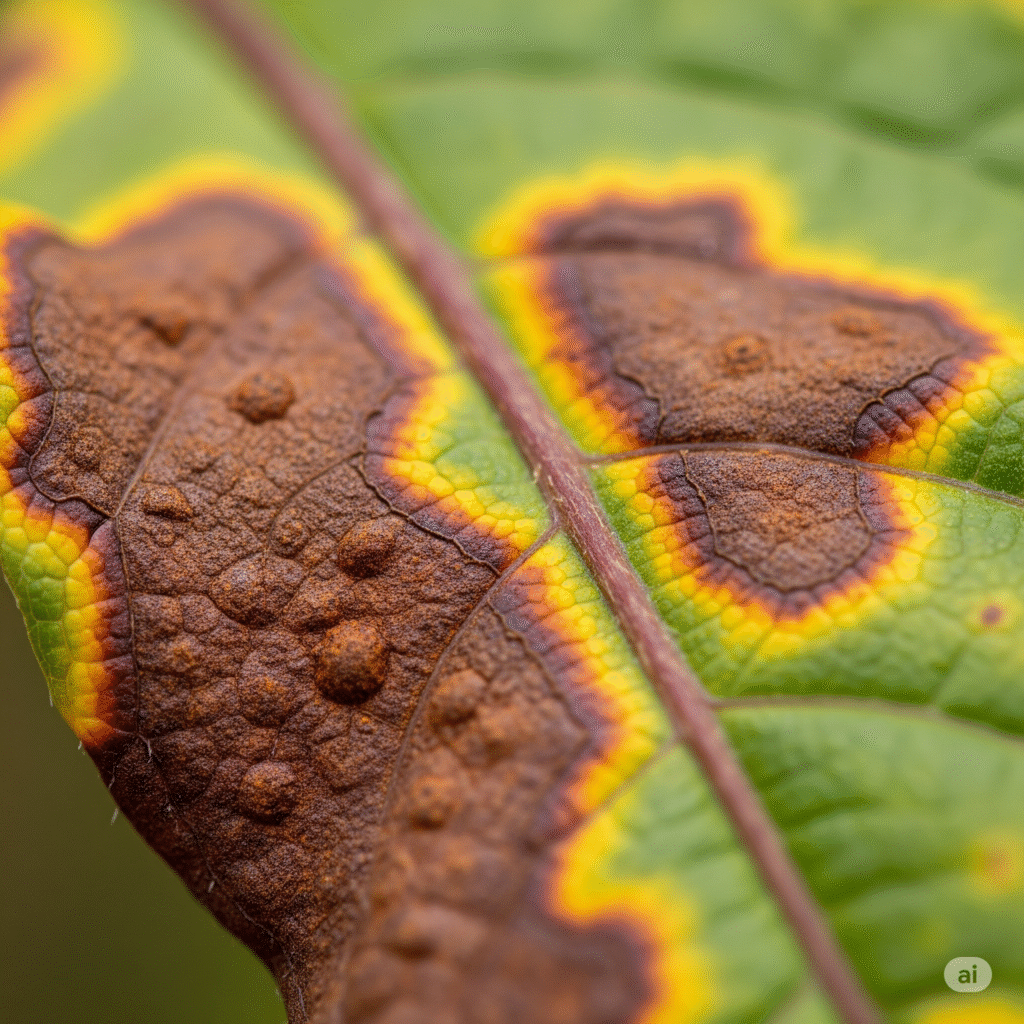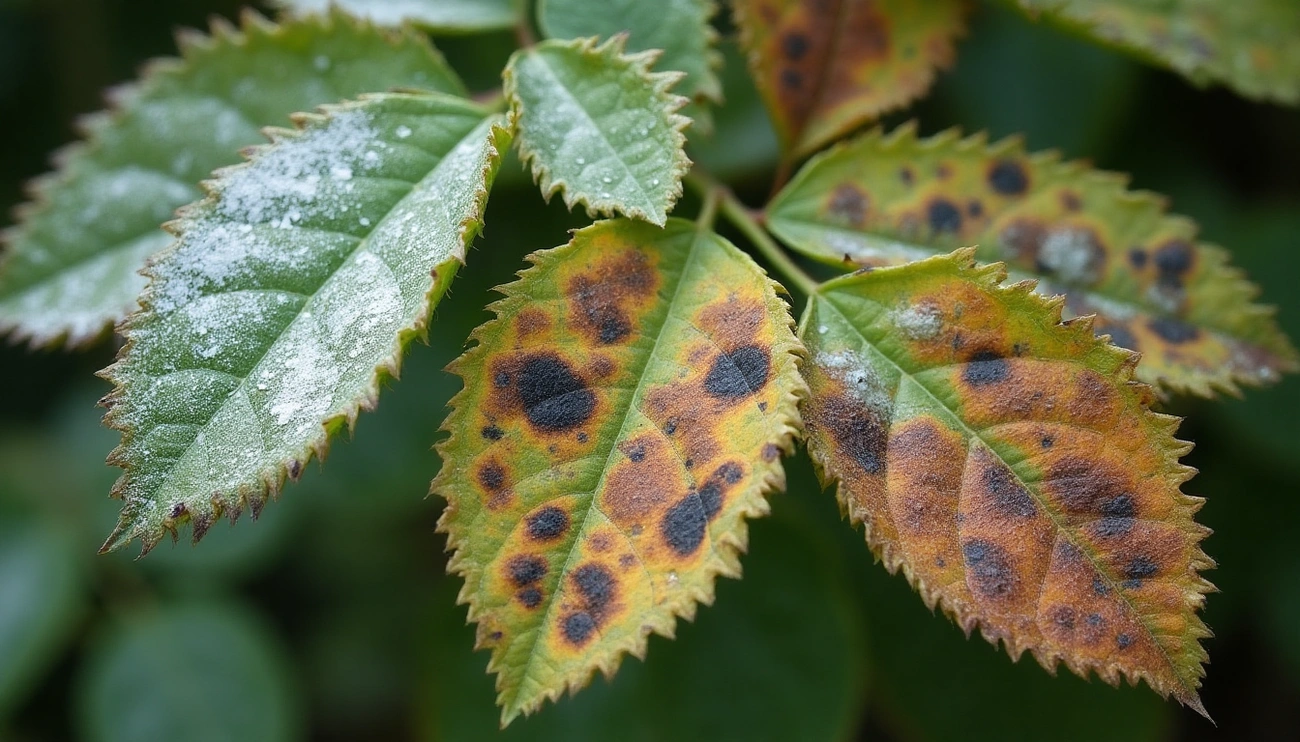How to Control Fungal Diseases in Plants: Your 2025 Garden Survival Guide
Learn how to control fungal diseases in plants and save your garden from silent killers. This 2025 guide provides essential strategies to identify, prevent, and treat common fungal infections effectively.
Common plant diseases such as fusarium wilt and verticillium wilt are especially problematic during hot summer temperatures, causing wilted leaves and stunted growth across hundreds of plant species. In fact, mosaic viruses can dramatically reduce your harvest yield, while damping-off disease can collapse entire seedling trays under wet, humid conditions.
We’ve created this comprehensive guide to help you identify, treat, and prevent these destructive plant infections before they take hold. Whether you’re battling sooty mold growing on honeydew deposits or snow mold attacking your lawn after winter, understanding these fungal adversaries is your first step toward effective plant diseases and treatment strategies. Let’s explore how to protect your garden from these silent killers.
Powdery Mildew

Image Source: Safer Brand
“Powdery mildew thrives in cool, humid environments, making it a common foe in our region.” — Al’s Garden Center, Established garden center in the Pacific Northwest
One of the most common and noticeable fungal diseases that may infiltrate your garden covertly is powdery mildew. Hundreds of plant species are afflicted by this widespread disease, which grows best in conditions with dry leaves and high humidity.
Table of Contents
What it looks like on leaves and stems
Powdery mildew presents as white to gray, talcum powder-like patches on plant surfaces. Initially, you’ll notice small discrete spots that gradually spread to cover entire leaves. Although primarily visible on the upper leaf surface, the fungal growth can also appear on the undersides, stems, flowers, and occasionally fruit. As the infection progresses, leaves may become distorted, yellowed, or curl at the edges. In severe cases, infected foliage dies prematurely and falls off, weakening the entire plant.
Depending on the host plant, the appearance may differ somewhat. While the infection may create purple to red discoloration surrounding afflicted regions on other plants, it causes brown scabby lesions on Sedum that might be mistaken for leaf spot disease.
Common plants affected
This fungal disease doesn’t discriminate, attacking both ornamentals and edibles with equal vigor. Among greenhouse crops, African violet, Begonia, Dahlia, gerbera daisy, Hydrangea, roses, and Poinsettia frequently suffer infections.
For garden perennials, Aster, Delphinium, Monarda, Phlox, and Rudbeckia show high susceptibility. Woody plants aren’t spared either—crapemyrtle, dogwood, lilac, and oak commonly battle this disease.
Vegetable gardeners should monitor cucurbits (cucumbers, squash, melons, pumpkins), tomatoes, peppers, lettuce, and peas carefully, as these crops are particularly vulnerable.
How to treat and prevent it
The greatest protection against powdery mildew is always prevention. To increase air circulation, plant resistant types whenever you can and make sure to space them properly. Additionally, keep vulnerable plants out of damp, shaded areas.
For existing infections, immediately remove and destroy affected plant parts—never compost this material as spores can survive the process. Furthermore, several treatment options exist:
- Organic remedies: Mix 1 part milk to 2-3 parts water for an effective spray, or combine 1 tablespoon baking soda with ½ teaspoon liquid soap in 1 gallon of water.
- Natural fungicides: Neem oil, potassium bicarbonate, and sulfur products offer good control when applied early.
- Chemical options: Fungicides containing thiophanate-methyl, myclobutanil, or chlorothalonil may be useful in extreme situations.
Remember to rotate between different treatment types rather than relying on just one approach, as powdery mildew fungi can develop resistance to many fungicides.
Downy Mildew

Image Source: Gardenia.net
“Downy mildew is potentially more damaging than powdery mildew. Fully infected plants lead to damaged fruit or new growth problems.” — Penn State Extension, Agricultural extension service of Pennsylvania State University
Unlike its namesake cousin, downy mildew represents a completely different class of pathogens that devastate garden plants through stealth attacks on leaf undersides. This moisture-loving disease can destroy entire plantings within days under the right conditions.
Symptoms on upper and lower leaf surfaces
On the top leaf surfaces, downy mildew first manifests as faint, uneven patches that range in color from yellow to light green. These patches frequently take on an angular shape and are bordered by veins in the leaves, giving the appearance of a tapestry or patchwork. As the infection worsens, the afflicted parts may thereafter become necrotic, purple, or brown.
The telltale signature appears on leaf undersides—a fuzzy, downy growth ranging from white to gray, tan, or even purplish, depending on the specific pathogen. This growth contains thousands of reproductive spores ready to spread. Moreover, severely infected plants eventually exhibit leaf distortion, premature yellowing, and defoliation, ultimately stunting growth and reducing yields.
Why wet weather makes it worse
Downy mildew thrives under specific environmental conditions that gardeners should recognize. Primarily, these pathogens require:
- Free moisture on leaf surfaces for spore germination
- Relative humidity above 85%
- Cool temperatures between 50-75°F (15-23°C)
As a result, outbreaks thrive throughout the spring and autumn seasons. The length of time leaves are wet is a crucial component; the longer leaves are wet, especially overnight, the greater the danger of infection. Notably, prolonged rainy periods create ideal scenarios for explosive disease development, as one infected leaf can produce thousands of new spores overnight.
Best cultural practices to avoid it
Fortunately, several proactive strategies can protect your plants:
- Improve air circulation through proper spacing, pruning, and thinning to reduce humidity around plants
- Water correctly by using drip irrigation instead of overhead sprinklers and watering early morning so leaves dry quickly
- Practice vigilant monitoring and immediately remove infected plants, placing them in sealed plastic bags for disposal
- Maintain garden sanitation by removing plant debris that may harbor spores
Furthermore, avoid working with plants when foliage is wet to prevent spreading spores between plants. When selecting new varieties, choose those with known resistance to downy mildew whenever possible.
Black Spot and Rust

Image Source: Lost Coast Plant Therapy
Among common fungal diseases, black spot and rust often confuse gardeners due to their similar appearance. Both diseases can severely weaken plants if left untreated, leading to premature leaf drop and decreased vigor.
How to tell them apart visually
Black spots are spherical, black patches on leaves with feathery, irregular borders that only show up on the upper surfaces of leaves and stems. As the disease progresses, yellowing patches develop around the spots, eventually engulfing the entire leaf. Diseased leaves eventually fall off the plant, leaving it vulnerable to other pressures.
In contrast, rust reveals itself through bright yellow, orange, or red leaf spots primarily on the undersides of leaves. These spots produce powdery spores that can be easily rubbed off and seen on tissue or paper. Rust may also form tiny cups or tubes on leaf undersides, and sometimes infects petioles, young stems, and fruitOn the undersides of leaves, rust can sometimes form small cups or tubes. It can also occasionally infect fruit, petioles, and young stems. Late in the season, rust pustules often turn black as they produce overwintering spores.
Plants most at risk
Roses top the list of plants affected by black spot, with the disease occurring everywhere roses grow in the U.S. In the country, this illness is regarded as the most serious rose sickness. Beyond roses, black spot can attack any plant with fleshy leaves and stems.
Rust diseases target a broader range of plants including roses, currants, gooseberry, arrowwood, apple, crabapple, ash, hawthorn, and many other deciduous trees and shrubs. Some rust fungi require two different host plants to complete their lifecycle, with cedar apple rust being a common example that affects both juniper species and plants in the Rosaceae family.
Fungicide options and resistant varieties
For black spot control, products containing chlorothalonil prove effective. Alternatively, organic options include:
- Neem oil and sulfur
- Copper-based fungicides
- Potassium bicarbonate products
For rust management, similar fungicides work well, though consistent application is crucial. When the sickness first appears, apply, and then continue every 7–14 days as long as conditions are suitable.
Regarding resistant varieties, look for roses labeled as black spot resistant, such as ‘Fortyniner,’ ‘Coronado,’ ‘Carefree Beauty,’ and ‘Simplicity’. For rust resistance, consider ‘Electron,’ ‘Just Joey,’ ‘Tournament of Roses,’ and Rosa rugosa varieties.
Mosaic Virus and Damping-Off

Image Source: Pressbooks at Virginia Tech
Viruses and fungi represent two distinct threats that can wreak havoc on garden plants, with mosaic virus and damping-off being among the most devastating. Understanding their differences and prevention methods is crucial for protecting your valuable plants.
How viruses differ from fungal infections
Mosaic viruses primarily display distinct mottled or mosaic patterns of yellow and green on infected leaves, often accompanied by leaf curling, puckering, and overall stunting of plants. Unlike fungi, viruses cannot be seen without specialized equipment and lack the powdery or fuzzy growth characteristic of fungal infections.
Virus particles consist of genetic material wrapped in a protein coat and can only replicate within living plant cells. Most importantly, whereas fungal diseases often respond to treatment, viral infections have no cure once established. Primarily, viruses spread through insect vectors like aphids and leafhoppers, as well as through infected tools during pruning or propagation.
Why seedlings are vulnerable to damping-off
Damping-off affects seedlings at their most vulnerable stage, causing them to collapse at the soil line as if cut off. Numerous soil-dwelling fungi and fungus-like organisms, such as Pythium, Rhizoctonia, Fusarium, and Phytophthora, are the cause of this illness.
Young seedlings are particularly susceptible because:
- Their stems contain soft, undeveloped tissues easily penetrated by pathogens
- They grow slowly in cool, wet conditions that favor fungal development
- They lack mature defense mechanisms against pathogens
Damping-off pathogens thrive in temperatures below 68°F with excessive moisture, making early spring plantings especially vulnerable. Once symptoms appear, infected seedlings rarely survive.
Prevention through sanitation and soil care
Since viruses cannot be cured, prevention remains the only effective strategy. Accordingly, control insects that vector viruses, remove infected plants immediately, and keep tools disinfected with 70% alcohol.
For damping-off prevention, start with thorough sanitation. Sterilize all containers in 10% bleach solution for 30 minutes, use only new sterile potting mix (never garden soil), and provide proper drainage. Furthermore, avoid overwatering, maintain soil temperatures between 70-75°F for optimal germination, and ensure good air circulation around seedlings.
Fusarium and Verticillium Wilts
Additionally, for best germination, keep soil temperatures between 70 and 75°F, prevent overwatering, and make sure there is adequate air circulation around seedlings.
How these soil-borne fungi attack roots
Both pathogens primarily enter plants through root systems, with infection rates increasing dramatically through wounded roots. Once inside, these fungi exhibit different behaviors—Fusarium typically grows upward into the trunk and branches, whereas Verticillium can enter through leaves or stems in addition to roots.
After invasion, both pathogens colonize the water-conducting vessels (xylem), essentially plugging the plant’s internal plumbing. This vascular invasion occurs through a combination of:
- Physical blockage from fungal growth
- Toxin production carried upward in the water stream
- The plant’s own defensive response producing gums that further block vessels
Long-term impact on plant health
These infections have quite different long-term consequences. Verticillium produces a gradual decrease over time, but Fusarium wilt typically kills plants completely. In terms of signs, both illnesses appear as:
- Yellowing and wilting of leaves, often on one side first
- Distinctive vascular discoloration visible by cutting stems lengthwise
- Premature leaf drop and stunted growth
Fusarium thrives in warmer conditions (80-90°F) and acidic soils, hence creating greater problems in warm climates. Conversely, Verticillium favors cooler temperatures yet can appear anywhere.
Why crop rotation works
Crop rotation represents one of the most effective management strategies against these persistent pathogens. Extended rotations of five to seven years prevent pathogen populations from reaching damaging levels. Furthermore, certain crops actively suppress these diseases—broccoli residue incorporation, for instance, dramatically reduces Verticillium microsclerotia in soil.
Most importantly, these fungi exhibit different host ranges. Fusarium strains remain host-specific, while Verticillium affects nearly 200 different plant types, making rotation planning crucial for effective management.
FAQs
Q1. What are the most common fungal diseases affecting garden plants? The most common fungal diseases affecting garden plants include powdery mildew, downy mildew, black spot, rust, and damping-off. These diseases can silently damage or kill plants if left untreated.
Q2. How can I identify powdery mildew on my plants? Powdery mildew appears as white to gray, talcum powder-like patches on plant surfaces. It typically starts as small spots that spread to cover entire leaves, and can also appear on stems, flowers, and occasionally fruit. Infected leaves may become distorted, yellowed, or curl at the edges.
Q3. What conditions favor the spread of downy mildew? Downy mildew thrives in cool, wet conditions. It requires free moisture on leaf surfaces, relative humidity above 85%, and temperatures between 50-75°F (15-23°C). Prolonged rainy periods create ideal scenarios for rapid disease development.
Q4. Are there any effective treatments for viral infections in plants? Unfortunately, there are no cures for viral infections once they are established in plants. The best approach is prevention through controlling insect vectors, removing infected plants immediately, and keeping gardening tools disinfected.
Q5. How can I protect my seedlings from damping-off disease? To protect seedlings from damping-off, practice thorough sanitation by sterilizing containers, using sterile potting mix, and providing proper drainage. Avoid overwatering, maintain soil temperatures between 70-75°F for optimal germination, and ensure good air circulation around seedlings.


